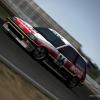This article will be your guide to upgrading the braking system in either the 1st gen CRX or 3rd gen Civic.
Donor Car Parts List
The following list includes all readily available brake parts that can be fitted to the 1st gen CRX without significant modification.
86-89 Acura Integra Front Calipers and Rotors
A fair bit larger than the stock CRX front brakes
86-89 Acura Integra Rear Disc Brake assembly
Not always a distinct performance upgrade but definitely wins out in the "cool factor"
86-89 Acura Integra Master Cylinder
Recommended when using both front and rear Teg brakes, but also quite advantageous with the stock calipers due to a larger piston diameter.
Front brake installation:
The front brake upgrade is quite straight forward. It is possible to simply unbolt your old stock caliper and rotor and replace them with the Integra units. It is also possible to swap out the entire front upright (knuckle) but Integra steering tie rods must then be used. It is also of note that the integra front hubs have a different # of splines to mate with the drive shafts than the CRX hubs. This being said, when using the stock drive train, it makes more sense just to bolt up to the stock uprights and use the Teg uprights if a ZC or Integra driveline is being used!
See Pic

Rear Disc Brake installation:
The rear disc brake swap is a far more complicated and involving job. The rear beam must be completely removed from the car to perform this task. Upon removal of the beam, place it somewhere it will be easy to work on and can be clamped down (I use a Black and Decker Workmate). Let's begin the swap:
1. With the beam out of the car, remove the drum, brake shoes and all of the associated springs from both ends of the beam.
2. Remove the hub from the spindle by removing the large nut in the center of the hub.
3. Next step is to remove the backing plate from the end of the beam. This is done by removing the 4 nuts surrounding ths spindle and pulling the backing plate off. You must also disconnect the hard brake line from the wheel cylinder to ease the removal. In my case the backing plate was VERY VERY difficult to remove as 15 years of Canadian winters had corroded it on there pretty good. It takes a LOT of heat, penetrating fluid and beating to get them off!!!!
4. Once the backing plate is removed, you will be left with 4 studs sticking out of the rear trailing arm. These studs must be removed and replaced with the slightly longer units from the Integra. To remove them, just give them a sharp hit with a hammer and they should pop out the inboard side of the trailing arm. Once you have replaced the studs you are ready for step 5.
5. The integra rear disc backing plate can now be installed. It bolts up directly with no modifications to the 4 new studs previously installed. The mounting for the caliper goes to the top.
See Picture

6. Now the hub may be re-attached.
7. install the rotor.
8. Install the caliper.
9. The flex brake line required is again an 86-89 Integra part. It must be routed creatively to use up some of its additional length. This line has a bracket half way down it's length. I used it to mount it to the trailing arm to keep everything tidy.
Another pic here when I get the chance to take it.
10. The emergency brake cables are also an 86-89 Integra part. They are far too long for the CRX and must be routed VERY creatively to take up the extra length. It helps significantly to have the Gas tank out of the car to do this but it is not impossible without removal of the tank. Regular Civics may not have this cable length problem.
And there you have it rear disc brakes!!!!
Integra Master Cylinder Installation:
This swap takes a fair bit of fiddling but seems to be well worth your while once completed. Upon experimenting I have found that for this mod you must use the stock CRX booster with the teg master. The problem with this is that the Teg master will not directly bolt up to the CRX booster, here's why. The mounting bolt holes line up perfectly and cause no problem. The real problem is that the cylindrical section between the mount holes on the master does not fit into the hole in the CRX booster. To rectify this, you must file the outer diameter of the cylinder on the master until it fits into the CRX booster. Once you have accomplished a good fit, put some gasket compound around the Master to booster interface to prevent vac leaks and reassemble just like the stock unit. And voila!! there you have it a bigger master cylinder!!!
This is just a general guide to the process of installing better brakes on the 1st Gen CRX. If there is anything I have missed, or you would like anything clarifying let me know and I will try and address any and all questions and or problems I hear about. Now, here's a few pics of the finished products!
Pic Front

Pic Rear

Happy Short Stopping Distances!!!!!!
 Sign In
Sign In Create Account
Create Account


 This topic is locked
This topic is locked

 View Garage
View Garage Back to top
Back to top























